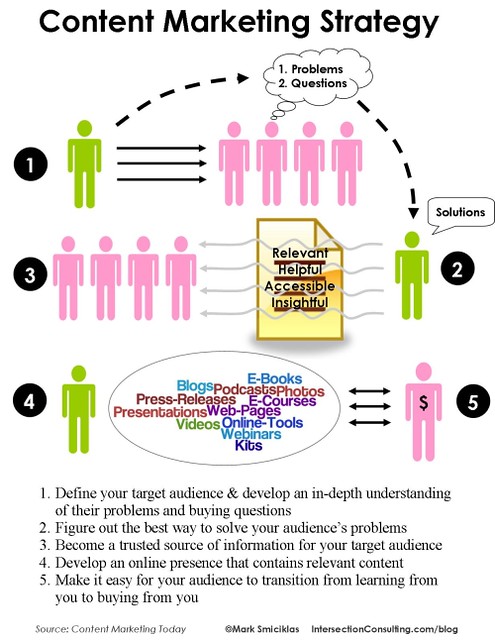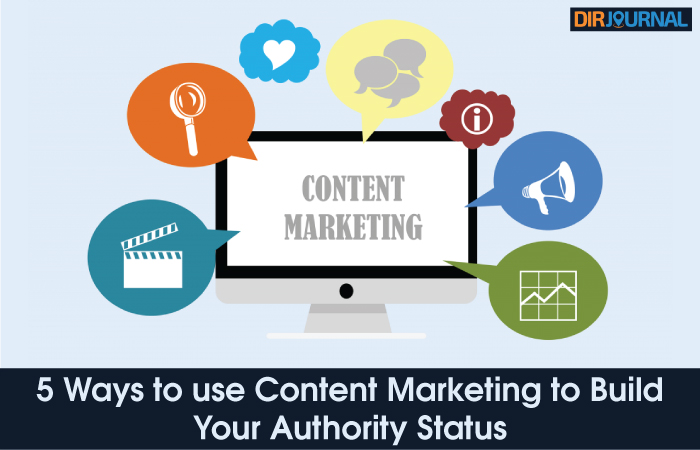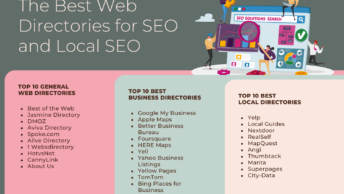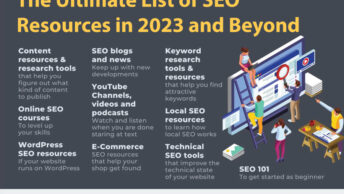Content marketing has always been important in conveying authority status in business. But the term itself is newer given its rise during the social media age because of the ease of creation, consumption, and interaction.
Today let’s talk about what content marketing is, why building authority status matters, and then five examples of how content marketing can help you become a recognized authority in your niche or industry.
What is Content Marketing?
“Content marketing” is a slightly misleading term. While sometimes the content is used directly for marketing and sales, more often these days it’s used in a PR capacity. And that’s the area of content marketing we’re talking about here — building and managing a reputation and relationships based on a perception of authority.
To do this you would use various types of content to showcase your expertise in your specialty area. You would offer content that attracts eyes or ears, and that in many cases leads to direct interaction with your target audience. It leads to respect. People share your content or spread the word to others. In exchange you get more and higher quality traffic and backlinks, you build valuable relationships and expand your network, and you make yourself known as an expert source. While the direct goals are networking, image management, traffic, and links these things often ultimately lead to increased sales. The marketing benefits are just indirect in many cases.

Why Authority Status Matters
Authority status has always mattered in business. But it’s almost more important now because the Web allows everyone to have a voice. While it can make it easier to get heard initially, it can also lead to a lot of noise and so much competition that it’s difficult to become recognized as a serious expert in your niche or industry.
Why would you want that expert or authority status? Because it leads to trust. And when people trust you they visit your website more. They listen to what you have to say. They tell others about you. They link to your site. And they’re more likely to buy from you.
5 Types of Content Marketing to Build Authority Status
What kinds of content can be used in content marketing to help you build and maintain authority status? Here are five examples.
1. Blogging – Publish articles highlighting your expertise with tips, advice, commentary, etc.
2. Newsletters – Publish authoritative content much like you would on a blog. But use it to build a subscriber list that could come in handy when promoting products and services later.
3. Guest posts / features – If you don’t want to launch your own online publication, write guest articles for others. That can mean anything from guest blog posts to feature articles for trade publications.
4. Webinars / e-courses – One of the best ways to demonstrate expert knowledge in a subject area is to successfully teach others. Obviously you should have credentials and experience to back that expert status up before you attempt to teach anyone else. It’s one thing to show people what you’ve done. It can be much more convincing when you teach them how to do it too. Webinars and e-courses give you ways to do that.
5. Video and audio series – We sometimes focus on the written word when we think about content. But content includes much more than that. Run a video blog or Web series for example. Or how about a podcast or Internet radio show? These can give your content marketing a more personal touch.

What are your favorite types of content marketing? Has a certain content format proved more beneficial than others in building your own authority status? For me, blogs have provided incomparable benefits. Share your own tips and stories in the comments below.








Video, in my opinion, is the most powerful overall because it lets people see YOU and creates an attachment. Additionally, you can then transcribe a video into a blog post and rip the audio into a podcast – you’re effectively creating three sources of content with one action. You’d do this because not everyone wants to learn through a single method; it’s a personal preference so you might as well give it to them 🙂
Great point about transcribing the video and doing the podcast – personally, I either read or, for extra long videos, would prefer to rip it as an audio and put it on my iPod. The more content options you give your visitors, the more likely they are to consume it!
While video (in lieu of posts or as a base for posts) often don’t work well in my primary niche, I did decide to create a podcast out of our best posts. They’ll be edited to make them more audio-friendly and then recorded. I’m not sure why it took so long to think of it, but so far readers seem happy about the idea and for the very reason you mention — being able to take it with them on their iPods. They cut back on the blogs they read due to time constraints, and audio versions let them catch up while doing other things. The only downside of encouraging that is that we lose comments. Still trying to figure out a good way to get them back on-site after the audio episodes.
It’s an interesting way to look at it. In my experience however, most blog readers don’t want to be bothered with video. It forces them to pay attention for a certain amount of time whereas people tend to have short attention spans on the Web.
In the end, you have to know your audience. Video will be a great content marketing tool in some niches (where screencast tutorials are big for example) but terrible in others where people want easily-scanned content that they expect online. It also comes down to how you can present yourself. For example, some of my niches involve writers. Professionals in that field create attachments through words far better than they can through a video. Some people can’t speak clearly enough — they’d bore their watchers to tears.
If you have the personality to pull it off, a follower base that likes that kind of content, and a niche that lends itself well to video I’d say you’re absolutely right. No reason not to give people multiple options. But if one form of content is going to present you in a negative light because it isn’t right for you or your audience, it’s best to skip it. That’s why strategy is so important before jumping into anything.
I think if you keep the video short and to the point, it’s probably okay on a blog. I know I always check the length before I push the play button. The last thing I want is some guy taking 8 minutes to explain something that can be clearly stated in 45 seconds.
Too many blogs I visit are missing the personal touch. A video (short! short!) could add that.
I’m the same way. I have a hard 3 minute rule for any kind of video tutorial. If it’s going to take longer than that, I’m not going to remember what you just did or said, so I want it in writing instead. And I’ll find that on another site if yours doesn’t offer it. Even better is a video less than two minutes, especially if it’s on a more personal level. I can see 1.x min and not care about that amount of time. I don’t feel like it’s potentially wasted if the video turns out to be uninteresting or useless to me. I can watch it while I load up another cup of coffee. Anything more than 3 minutes long and it had better be incredibly important to me (like a video of a seminar I missed or major world news) or be entertaining (like a well-done web series).
Video is often done well. It’s also often done poorly. It’s just one of those things where you need to know the attention span of your audience and ask “is there a better way I could present this?” For tutorial-based videos specifically I’d say you’re pretty safe as long as there’s a print version to accompany it (so people can scan right to the part they have questions about if they don’t need the entire thing).
Great article! You guys have convinced me to add video to my blog spot. The podcast is another great idea. I love iMovie for adding a professional touch to video.
Glad to hear it Catherine. 🙂 Out of curiosity, what kinds of videos do you plan to use to better connect with your audience?
Hi J-
Some of my most popular post, are on packing tips and what wear when traveling, so I thought that would be a good place to start.
It sounds like you have an interesting niche where you can combine instructional and entertaining elements in your videos (like how-to w/ the packing side, while entertaining on the fashion side). Do let us know when you’ve posted one so we can check it out. 🙂
[…] 5 Ways to use Content Marketing to Build Your Authority Status by great Jennifer Mattern at DirJournal […]
[…] marketing campaigns is to see what others have done before you. By seeing real life examples of successful content marketing attempts, you can begin to gain an understanding of what really works – and what to avoid. This […]
[…] 5 Ways to use Content Marketing to Build Your Authority Status […]
Really no matter if someone doesn’t know after that its up to other viewers that
they will help, so here it happens.